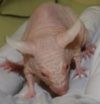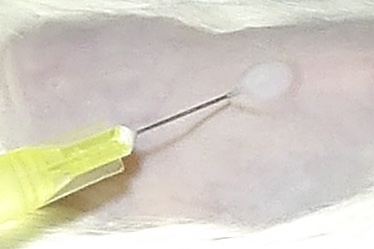
We are pleased to announce that Imavita team recently co-authored a publication with
Ipsen about AbobotulinumtoxinA improvement on skin properties and sebum quality in Rhino mouse acne model. The paper was released in Toxicon Volume 233, on September 2023 and is fully available on-line:
https://doi.org/10.1016/j.toxicon.2023.107230
Thank you to all collaborators and team for this collaborative work!
Abstract:

Besides neuronal cells, botulinum neurotoxins (BoNTs) can also affect other cell types such as fibroblasts or keratinocytes. These cells play a key role in skin conditions. Maintaining a high-quality sebum secretion is essential to avoid premature aging. This study explored the effect of abobotulinumtoxinA (aboBoNT-A) in the rhino mouse. Briefly, anaesthetized animals were injected via the intra-dermal route (ID; four sites of injection) by either vehicle or 0.1, 0.3 and 1 Unit aboBoNT-A per mouse. A reference group was administered with adapalene gel 0.1% (daily local application) for 15 days. Adapalene is a third-generation retinoid and is used as first-line treatment of moderate acne. The body weight and the thickness of the dorsal skin were measured on days 1, 5, 10 and 15; erythema and scaling were recorded at the same time. On day 15, animals were ethically euthanized and skin samples were collected for histology, ELISA and lipidomic assays. AboBoNT-A administered ID at the doses 0.1 U and 0.3 U per mouse was well tolerated. 1 U aboBoNT-A (per mouse) induced a transient loss of muscle tone associated with a slight body weight loss after which mice recovered a good health status. AboBoNT-A did not show any significant effect on utricles surface area but induced a significant anti-inflammatory effect on dermis at the two highest doses. Moreover, aboBoNT-A showed neither side effects commonly observed with local retinoids, nor hyperplasia or dermis inflammation. No change in skin Interleukin-1alpha (IL-1α) cytokine levels was evidenced with aboBoNT-A, whereas a dose-dependent increase of substance P (SP) concentration in the skin was recorded, suggesting that aboBoNT-A induces neuropeptide accumulation in tissue by inhibiting exocytosis mechanisms. Lipidomic analysis showed that aboBoNT-A significantly increased the sebum concentration of several lipid species, presenting skin protecting properties. Overall, these data suggest that ID aboBoNT-A has skin rejuvenation, anti-inflammatory and moisture-boosting properties.